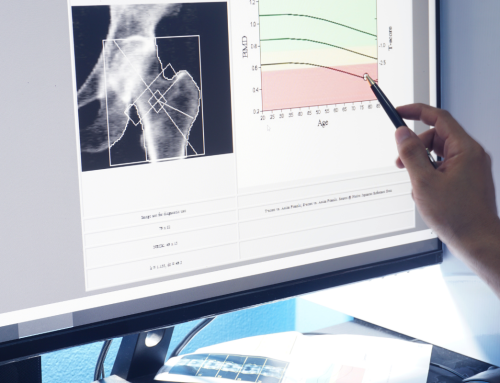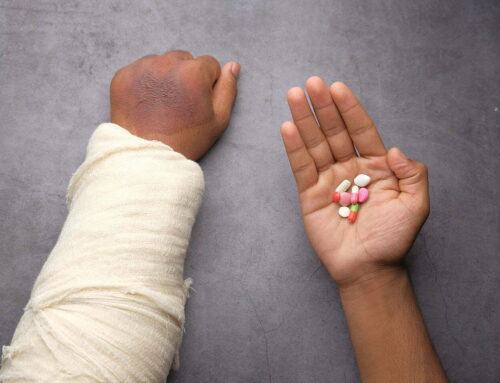
Breast cancer survivors have a 68% higher risk of osteoporosis and osteopenia compared to cancer-free women. Breast cancer is the second highest common cancer found in women. Due to the change in hormones and treatment options available, survivors are often found to have less bone density.
Read on to learn more about why breast cancer and bone density are linked and how you can decrease your osteoporosis risk.
How are Breast Cancer and Osteoporosis Linked?
Osteoporosis is a silent disease, and you often don’t know you have it until there has been enough significant bone density loss that you suffer from a fracture. 1 in 3 women and 1 in 5 men in Canada will suffer from an osteoporotic fracture over the course of their life.
There are several risk factors for developing osteoporosis that doesn’t include breast cancer. Some of the common ones are:
- Thinness or a small frame.
- Family history of osteoporosis.
- Being postmenopausal.
- Smoking.
- Excessive alcohol use.
- Lack of exercise, particularly load-bearing exercise.
- A diet that lacks calcium and vitamin D.
Women with lower estrogen levels are often at risk, which means those who have been through breast cancer treatments, had their ovaries removed, or experienced menopause increase their risk.
Not only this, but breast cancer can cause inflammation that slows new bone growth while your body goes through its natural breakdown and rebuild process. Treatment options available typically have an element of estrogen levels being affected, like the following:
Chemotherapy: Some chemo treatments can lead to early menopause because they lower estrogen levels.
Ovarian suppression: When you undergo ovarian suppression treatments, your ovaries will stop producing estrogen. Even though estrogen production resumes after you’re done taking the medication, bone strength can still be reduced during the gap period. If your ovaries are removed completely, you will be at a higher risk for osteoporosis due to the estrogen production completely halting.
Radiation therapy: While the radiation works to kill cancer cells after your surgery, it can also come with an increased risk of rib fractures due to radiation exposure, and you may also experience some bone loss.
Aromatase Inhibitors: This hormone therapy prevents estrogen production to keep cancer cells from growing. However, the side effects can include menopausal symptoms and loss of bone density, which can lead to osteoporosis.
Tamoxifen: This medication is often used to prevent estrogen from helping cancer grow, similar to the inhibitors mentioned above. However, if you haven’t reached menopause yet, it can increase the risk of osteoporosis.
Despite the statistics, you can adapt your lifestyle to promote better bone health and protect your body from decreasing bone density. It comes down to your diet, exercise routine, and health choices.
Preventing Osteoporosis After a Breast Cancer Diagnosis
After your treatment, you won’t have any telltale signs that you’ve experienced some bone density loss. However, you can get a bone density test to compare your results to other people in the same gender and age group. The best thing you can do is implement preventative lifestyle changes to protect your bones from becoming weaker. The best three ways to do that are through nutrition, exercise, and adapting your lifestyle.
Nutrition
Your bones thrive off calcium and vitamin D. This means you should be aware of the foods you’re consuming and ensure you’re getting enough of these nutrients. Some calcium-rich food sources you’ll want to consider include:
- Dairy products such as yogurt, cheese, and milk.
- Dark leafy vegetables, like kale, collard greens, turnip greens, and cabbage.
- Tofu.
- Fruits like dried apricots or raisins.
As we mentioned, vitamin D is also a big player. It’s what allows your body to absorb calcium. You can get vitamin D in the following foods/beverages:
- Egg yolk.
- Fatty fish like salmon, canned tuna, or sardines. Basically, any fish that will have small bones (that are edible) in them.
- Pork.
- Beef liver.
Exercise
The good thing about exercise is that many options are available to get your bone health at its best. All you need is to ensure you’re incorporating load-bearing exercises or resistance-based training. Some of the best exercises for bone health include:
- Walking
- Tai-chi
- Yoga
- Dancing
- Resistance exercises (with weights or using your body only)
Lifestyle choices
Your lifestyle choices include your diet and exercise approach, but there are two other components you need to pay attention to. Drinking alcohol regularly and excessively, as well as smoking can increase your risk of osteoporosis. If you’ve experienced a breast cancer treatment plan, it’s recommended to be aware of your consumption to give your bone health its best shot.
Osteoporosis can’t be reversed, but you can protect yourself against declining bone density after receiving a breast cancer diagnosis. When you’re exhausted from treatment, it can be hard to keep up with healthy habits, especially exercise. You can vibe with Marodyne LiV to get the same benefits developed with support by NASA. This low-intensity vibration stimulates your body and provides the same benefits to your bones as running 18km per day. Contact our team to find out if this device can be helpful for your health.
Did you know breast cancer and osteoporosis were linked? What’s your favourite type of bone-building exercise? Share your thoughts with our readers in the comments below.




 Black Friday → Christmas Sale! Save $300 + Free Shipping
Black Friday → Christmas Sale! Save $300 + Free Shipping 